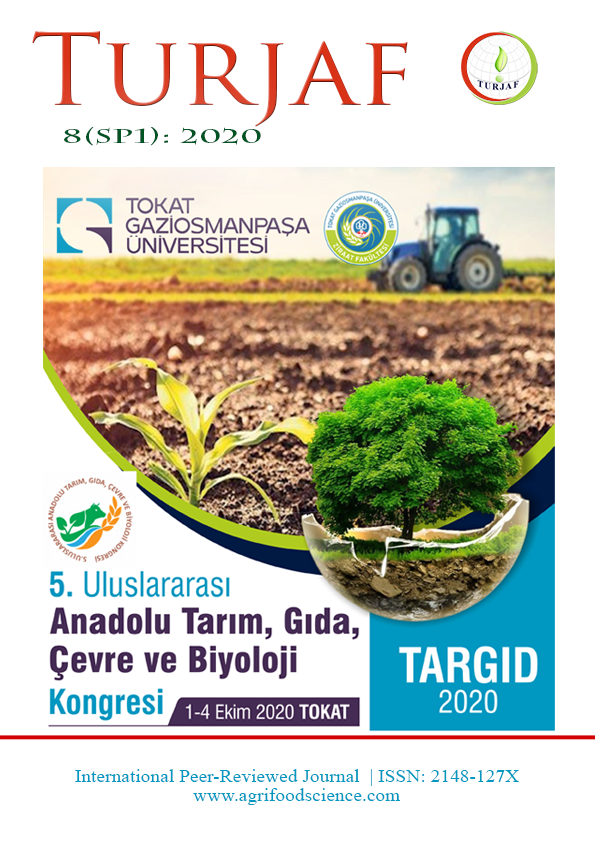Effects of Different Boron Compounds to Bean Common Bacterial Blight Disease
DOI:
https://doi.org/10.24925/turjaf.v8isp1.226-233.3924Anahtar Kelimeler:
Bean- Boron- Control- Organic- Sustainable AgricultureÖzet
Common leaf blight disease caused by Xanthomonas aXonopodis pv. phaseoli (Xap) is one of the most important bean bacterial agents that cause significant yield losses in tropical and subtropical climates and are transmitted by seed. Antibiotics and copper compounds are used to combat the disease, but problems are encountered due to the pathogen‘s resistant mutants and phytotoXicity. Boron (B) is an essential nutrient element for the plant and also plays an important role in the plant disease resistance system. In this study, the effects of 12 different boron compounds on Xap were investigated. In vitro eXperiments, the effects of chemicals on Xap population growth and MIC values were determined. Under controlled conditions, 6-week-old sensitive bean cultivar Aras 98 plants were inoculated with Xap suspension at a density of 108 CFU ml-1. Plants were treated twice with 7 days intervals at 5 different concentrations (1, 5, 10, 20, 40 mM) determined in vitro and varied according to the chemical. Disease verity was evaluated with a scale of 1-9 and the chemicals with the lowest diseaseverity compared to the control (81.15%) were sodium tetrafloraborate (13.88%) and potassium tetrafloraborate (15.38%). The highest disease verity was obtained with boric acid application (78%). PhytotoXic effects of the chemicals in plants have not been determined. Depending on the findings obtained from the study, it is thought that some boron compounds may be involved in organic and sustainable agriculture because of their important effects on common bacterial blight in beans.İndir
Yayınlanmış
2020-12-14
Nasıl Atıf Yapılır
Gedük, A., Bastas, K. K., Kordali, Şaban .-., & Yılmaz, F. (2020). Effects of Different Boron Compounds to Bean Common Bacterial Blight Disease. Türk Tarım - Gıda Bilim Ve Teknoloji Dergisi, 8(sp1), 226–233. https://doi.org/10.24925/turjaf.v8isp1.226-233.3924
Sayı
Bölüm
Araştırma Makalesi
Lisans
Bu çalışma Creative Commons Attribution-NonCommercial 4.0 International License ile lisanslanmıştır.

























